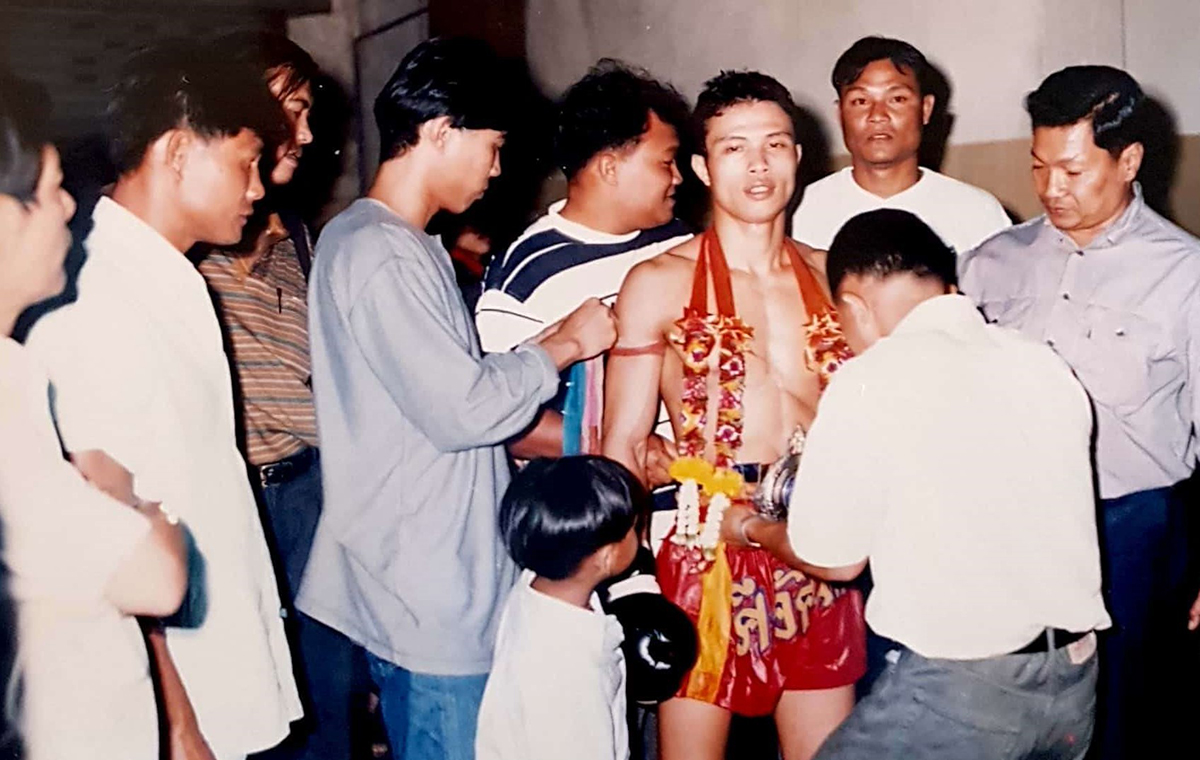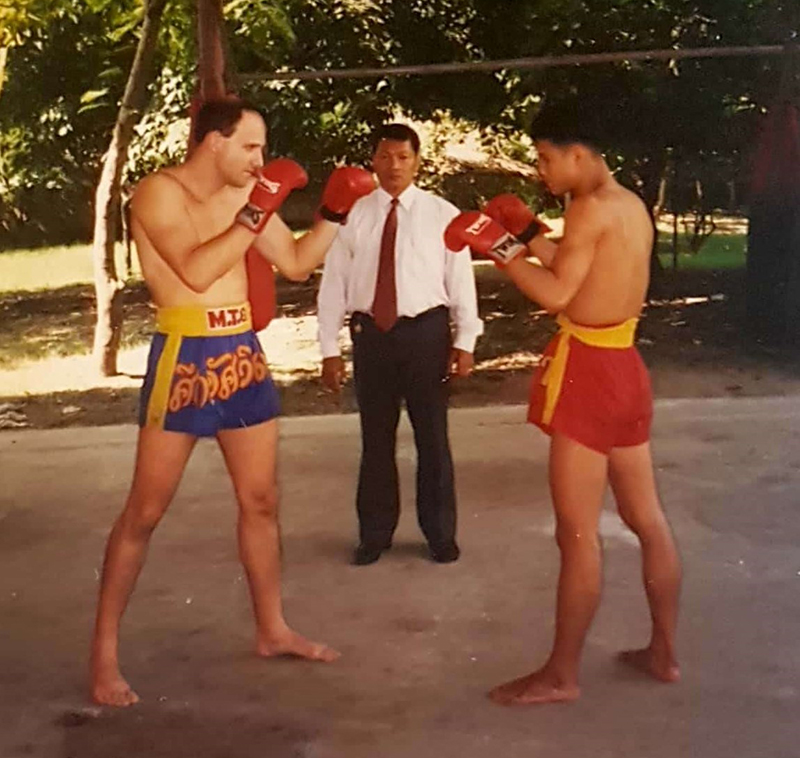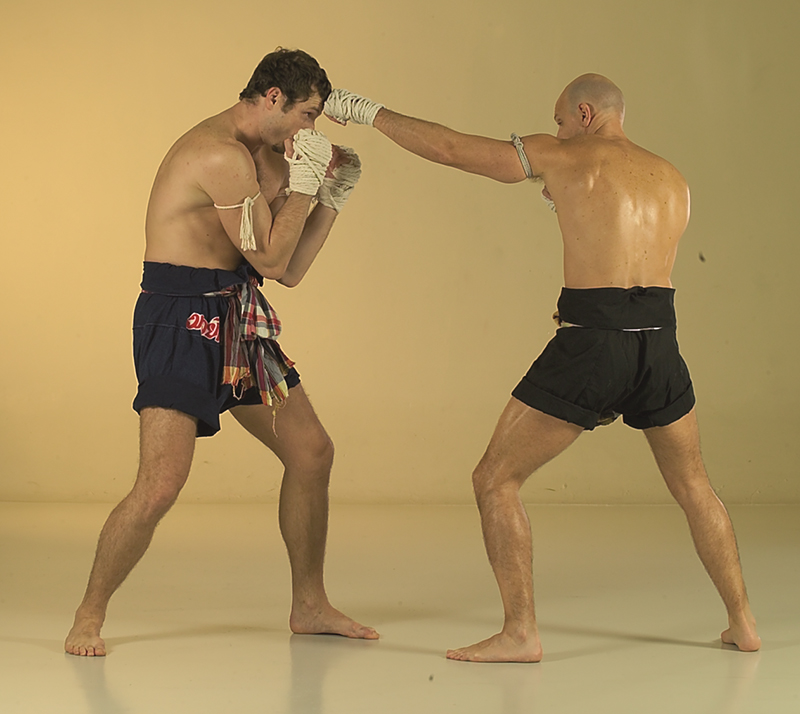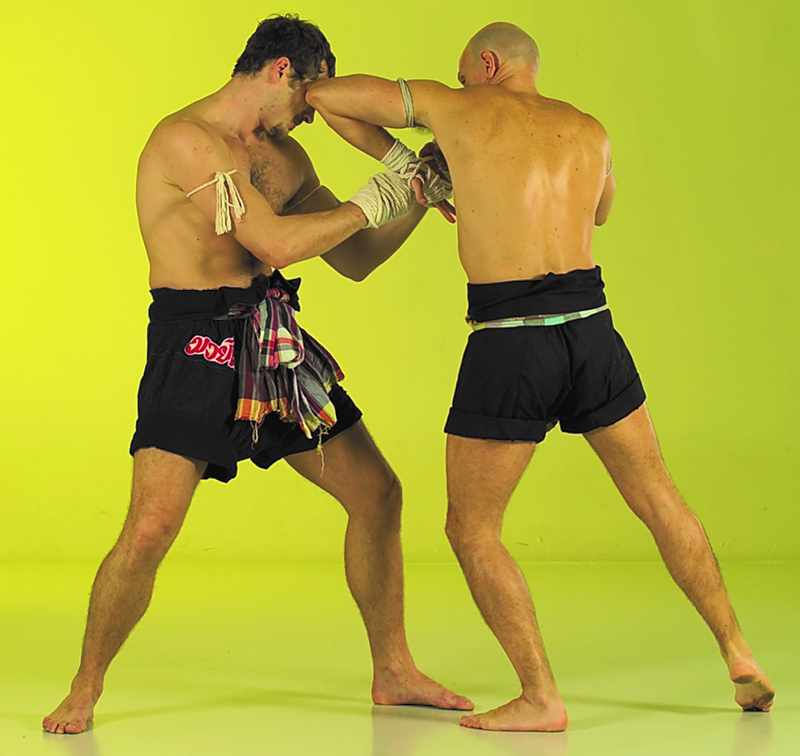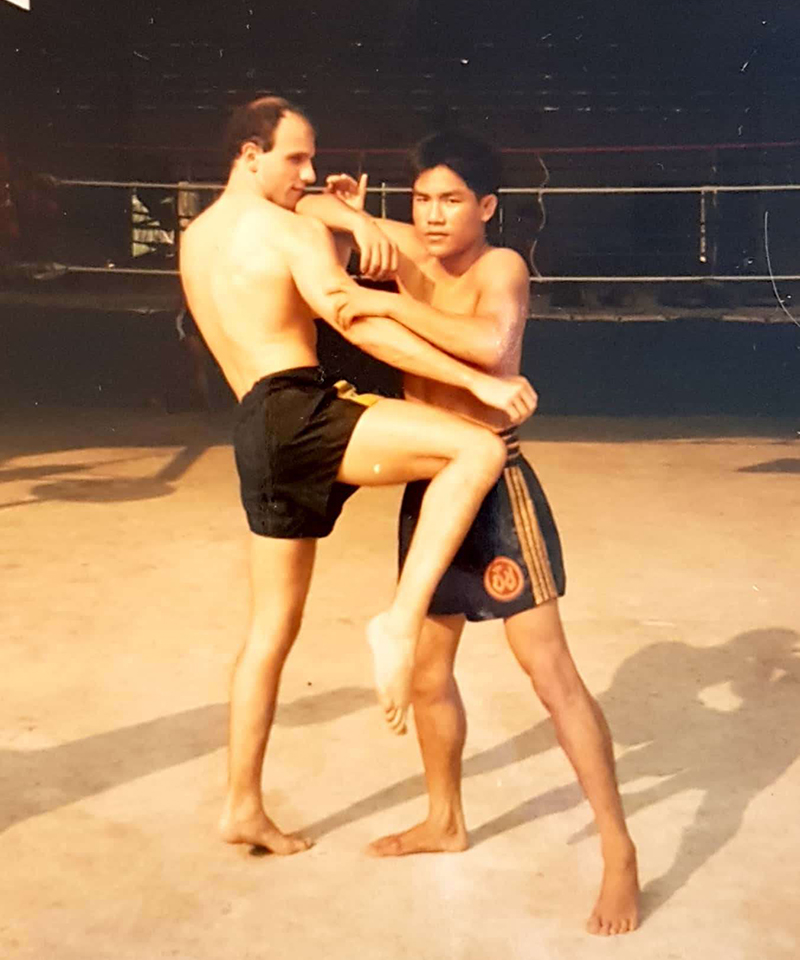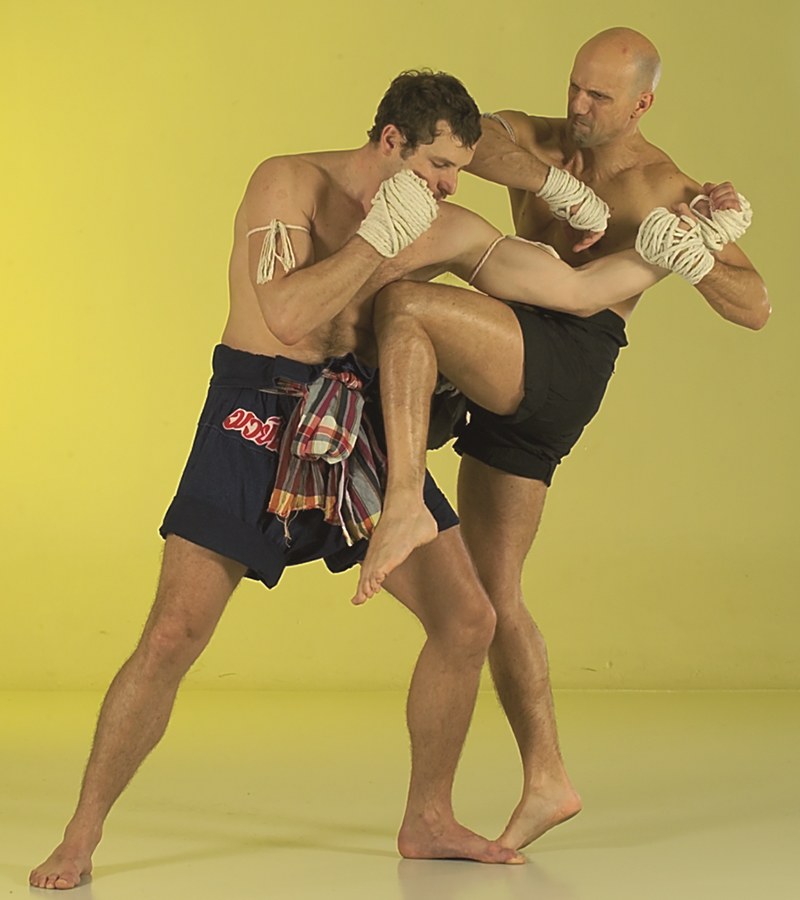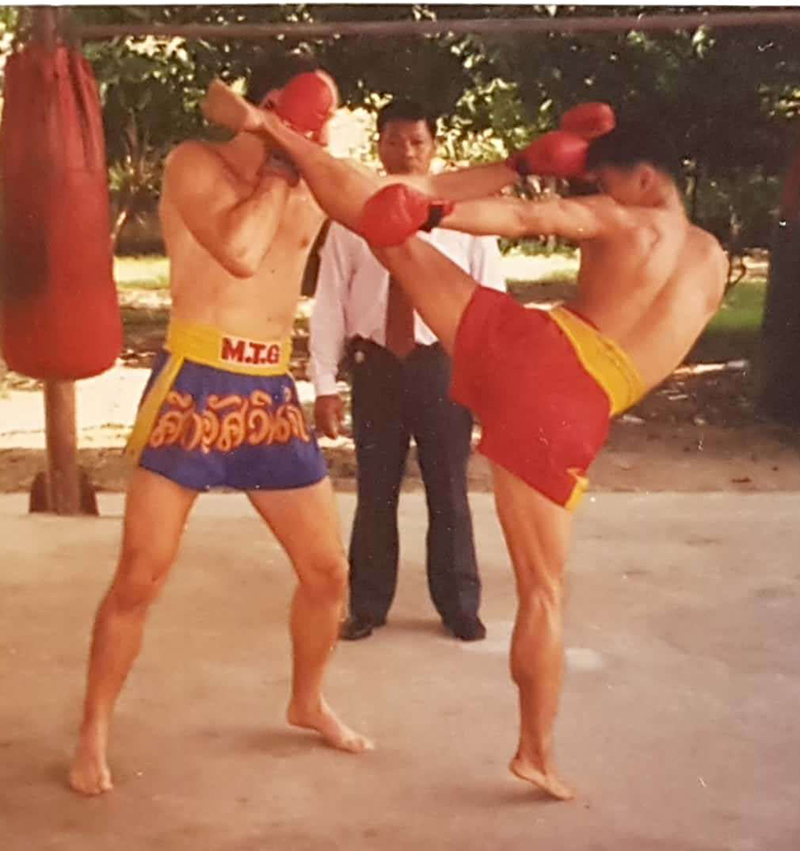
Learning original Muay Thai: the power of team work.
Chapter 4.The cobra and the pit-bull: a comparison of Muay Thai styles.
By Marco De Cesaris
During the days spent at Pinsinchai Boxing Gym between 1986 an 1995 I met and trained with some of the best fighters of the so-called Golden Era of Muay Thai. Some of them were particularly friendly and some others were rather private persons. However, all of them were great champions and they all passed on a great deal of priceless technical information to me, explicitly or implicitly.
Among the ones that showed me their tricks mostly in indirect ways I vividly recall New Sanchien Pinsinchai (Rajadamnern Champion at the time of my stays)
and Yodkhunpon Sittripum (Rajadamnern and Lumpini Champion).
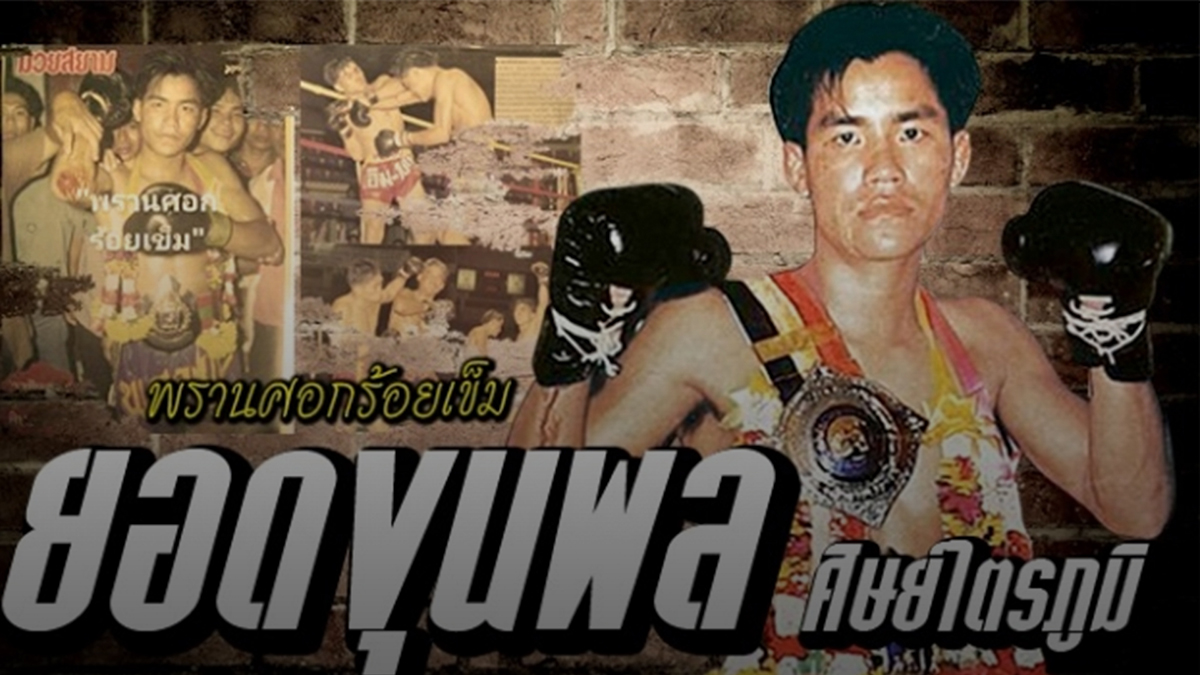
Both of them belonged to Asswindum the stable of fighters managed by the Camp’s owner, General Sawake Pinsinchai.
New Sanchien was a pure product of Pinsinchai Gym while Yadkhunpon was a boxer “on loan”, temporarily training there and fighting for the Camp. I was doubly lucky to be there during his stay at Pinsinchai’s. I witnessed for 2 times the whole preparation for an upcoming fight of both champions and I truly learned a lot from that experience. Both of them were outstanding fighters, even if their characteristics were fundamentally different, like water (New Sanchien) and fire (Yodkhunpon). Both were highly skilled Nak Muay: nothing they did was casual, all their maneuvers were always carefully planned. In fact, the origin of some of their impressive techniques can even be traced back to ancient Muay. Let us analyse some of the technical features of those two champions’ fighting styles.
New Sanchien Pinsinchai was a perfect example of Fi Meu, a Thai Boxer that is highly skilled in the use of all Muay Thai weapons (i.e., punches, kicks, knees and elbows). Moreover, he had developed perfect timing and fighting range control. This characteristics allowed him to hit without being hit and to be in total control of the fight all the time. In the ring he was cool and controlled, his glacial expression showed no emotion from start to finish of a fight. Nevertheless, he reminded me of a coiled spring, always ready to explode in the blink of an eye. For all these reasons, I call this type of boxer a Cobra stylist.
Cobra style’s features:
Optimal management of range
Sanchien was a leader in the ring: he imposed his game plan on his opponents both physically and psychologically. In fact, he forced the opponent to “play his game” being at the chosen distance all along. When he wanted the opponent to stay at bay he used footwork and well-timed stop hits. If he decided to close the gap to strike, he did before the opponent could put up a proper defense.
Lighting fast reflexes
He was incredibly fast. In some cases the combinations of defensive and offensive maneuvers he executed were so fast that even in slow motion they were hard to see. His speed was an inborn gift: however, he was clever enough to train regularly to learn how to fully exploit it.
Perfect body control.
All fighters know that speed without control is useless. Sanchien was gifted with speed and conscientiously worked on his body control every given day. This was one of the mantra of Master Krutsuwan: “control your body”. After every blow on the pads, Master Krutsuwan checked your posture, balance and guard position. If you control your body before and after every strike you can react quickly to every possible attack or counterattack.
All-round body weapons skills
Sanchien was a typical all-rounder, his was good with his hands and feet, elbows and knees. He was most comfortable at long range where he could best use his deadly high kicks but in case of need he could grapple with anyone and come out on top. Before one of his title defences, I recall him grappling for 2-hours sessions with other top fighters (like Thailand Pinsinchai) on a daily basis for 3 weeks.
Flawless accuracy of strikes
One of Sanchien “personal trainers” was a former champion named Super Noi: with him he went many rounds on the focus pads working pinpoint accuracy of punches and elbow strikes. One of his favourite moves on the focus gloves consisted in a quick combination of jab and horizontal elbow performed with the same arm. They repeated this maneuver over and over in search of perfection. In Muay Boran this deceptive technique is known as Hak Dan Lom Krod. A few years later in Paris a refereed a fight between Sanchien and a strong French fighter and the latter was floored by this same maneuver executed with lighting speed.
Yodkhunpon Sittripum was the typical example of aggressive fighter. His fight plan was basically to corner the opponent in order to unleash extremely powerful short range strikes, mainly elbows and knees. The extensive use of elbow strikes usually put his opponents in a state of anxiety. In fact, the elbow is the body weapon that fighters fear the most for its capacity to inflict serious wounds on the face and head. He was so reputed as an elbow strikes expert that he was labelled as the “fighter of 100 stitches” referring to the many wounds inflicted on the faces of his opponents. Once he had his opponent on the ropes, he combined elbow blows with short punches and knee strikes to make blocks and parries more difficult to apply. Even the strongest adversary fell victim to his fighting tactics. To an untrained eye, his strategy may seem basic and unrefined but in reality it is canny and well-planned in all aspects. I call this type of thai boxer a Pitbull stylist.
Pitbull stylist’s features:
Hyper aggressive attitude
A Pitbull stylist’s characteristics are his tenacity, gameness, and courage. Yodkhunpon possessed all of these attributes combined with a very aggressive attitude. His relentless fighting style put all his opponents under constant pressure, forcing them to engage in close range combat even if they didn’t want to.
Perfected footwork to cut off the ring
In order to stick to his plan, Yodkhunpon employed specific footwork to cut off the ring and close the gap with the opponent. His skill in closing the distance was so refined that very few opponents had the speed and ability to avoid being cornered. His aggressive footwork was not improvised but resulted from countless hours of work with his fellow fighters and his trainers.
Powerful offensive combinations.
Yodkhunpon often used attacks by combinations to overwhelm his opponents. One of his preferred combo consisted of a left knee to the body followed by a right elbow to the head (or vice versa). In Muay Boran jargon this combination of knee and elbow attacks is called Take Ti Chud.
Great stamina
Fighting at close range, constantly pressing the opponent requires great endurance. His rigorous training regimen was the bedrock that supported all of his fighting strategy. Roadwork, pad work and clinch work were the ingredients of his daily training routine. Each exercise was performed with the determination of a vigorous fighter who likes to mix it up.
Ability to take a blow
As an aggressive fighter Yodkhunpon had to possess the ability to resist and recover from the opponents’ blows. In order to do that, he concentrated on neck exercises on a daily basis. In fact, as all fighters know, a strong neck acts as a natural shock absorber and can keep the defender safe in case of a head strike. One of his favoured neck exercise was the wrestler bridge: he favoured the headstand version. I remembered him performing the headstand on the corner of the ring; once reached the proper position he started to perform neck stretches in all directions, back and forth and left to right for a true all-round neck development. Note that this arduous exercise was usually executed after an hour or so of clinch sparring with one or more sparring partners (!).


